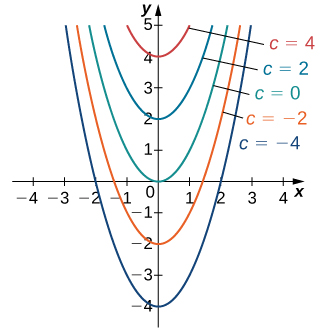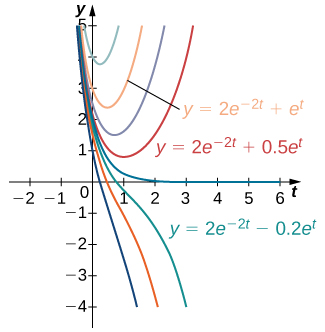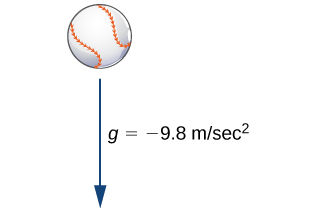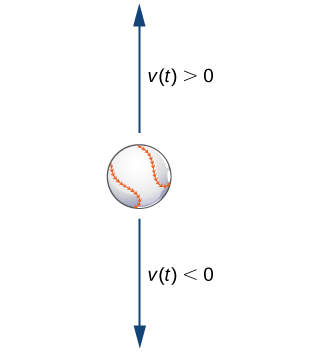9.1: Modeling with Differential Equations
( \newcommand{\kernel}{\mathrm{null}\,}\)
- Identify the order of a differential equation.
- Explain what is meant by a solution to a differential equation.
- Distinguish between the general solution and a particular solution of a differential equation.
- Identify an initial-value problem.
- Identify whether a given function is a solution to a differential equation or an initial-value problem.
Calculus is the mathematics of change, and rates of change are expressed by derivatives. Thus, one of the most common ways to use calculus is to set up an equation containing an unknown function
Techniques for solving differential equations can take many different forms, including direct solution, use of graphs, or computer calculations. We introduce the main ideas in this chapter and describe them in a little more detail later in the course. In this section we study what differential equations are, how to verify their solutions, some methods that are used for solving them, and some examples of common and useful equations.
General Differential Equations
Consider the equation
A differential equation is an equation involving an unknown function
Go to this website to explore more on this topic.
Some examples of differential equations and their solutions appear in Table
| Equation | Solution |
|---|---|
Note that a solution to a differential equation is not necessarily unique, primarily because the derivative of a constant is zero. For example,
Verify that the function
Solution
To verify the solution, we first calculate
The resulting expression can be simplified by first distributing to eliminate the parentheses, giving
Combining like terms leads to the expression
Verify that
- Hint
-
First calculate
It is convenient to define characteristics of differential equations that make it easier to talk about them and categorize them. The most basic characteristic of a differential equation is its order.
The order of a differential equation is the highest order of any derivative of the unknown function that appears in the equation.
The highest derivative in the equation is
What is the order of each of the following differential equations?
Solution
- The highest derivative in the equation is
- The highest derivative in the equation is
- The highest derivative in the equation is
What is the order of the following differential equation?
- Hint
-
What is the highest derivative in the equation?
- Answer
-
General and Particular Solutions
We already noted that the differential equation

In this example, we are free to choose any solution we wish; for example,
Find the particular solution to the differential equation
Solution
Any function of the form
Therefore the particular solution passing through the point
Find the particular solution to the differential equation
passing through the point
- Hint
-
First substitute
- Answer
-
Initial-Value Problems
Usually a given differential equation has an infinite number of solutions, so it is natural to ask which one we want to use. To choose one solution, more information is needed. Some specific information that can be useful is an initial value, which is an ordered pair that is used to find a particular solution.
A differential equation together with one or more initial values is called an initial-value problem. The general rule is that the number of initial values needed for an initial-value problem is equal to the order of the differential equation. For example, if we have the differential equation
Verify that the function
Solution
For a function to satisfy an initial-value problem, it must satisfy both the differential equation and the initial condition. To show that
This is equal to the right-hand side of the differential equation, so
This result verifies the initial value. Therefore the given function satisfies the initial-value problem.
Verify that
- Hint
-
First verify that
In Example
The same is true in general. An initial-value problem will consists of two parts: the differential equation and the initial condition. The differential equation has a family of solutions, and the initial condition determines the value of

Solve the following initial-value problem:
Solution
The first step in solving this initial-value problem is to find a general family of solutions. To do this, we find an antiderivative of both sides of the differential equation
namely,
We are able to integrate both sides because the y term appears by itself. Notice that there are two integration constants:
Because
Next we determine the value of
Now we substitute the value
Analysis
The difference between a general solution and a particular solution is that a general solution involves a family of functions, either explicitly or implicitly defined, of the independent variable. The initial value or values determine which particular solution in the family of solutions satisfies the desired conditions.
Solve the initial-value problem
- Hint
-
First take the antiderivative of both sides of the differential equation. Then substitute
- Answer
-
Applications
In physics and engineering applications, we often consider the forces acting upon an object, and use this information to understand the resulting motion that may occur. For example, if we start with an object at Earth’s surface, the primary force acting upon that object is gravity. Physicists and engineers can use this information, along with Newton’s second law of motion (in equation form

In Figure

Our goal is to solve for the velocity
Notice that this differential equation remains the same regardless of the mass of the object.
We now need an initial value. Because we are solving for velocity, it makes sense in the context of the problem to assume that we know the initial velocity, or the velocity at time
A baseball is thrown upward from a height of
- Find the velocity
- What is its velocity after
Solution
a. From the preceding discussion, the differential equation that applies in this situation is
where
The first step in solving this initial-value problem is to take the antiderivative of both sides of the differential equation. This gives
The next step is to solve for
Therefore
b. To find the velocity after
The units of velocity are meters per second. Since the answer is negative, the object is falling at a speed of
Suppose a rock falls from rest from a height of
- Hint
-
What is the initial velocity of the rock? Use this with the differential equation in Example
- Answer
-
A natural question to ask after solving this type of problem is how high the object will be above Earth’s surface at a given point in time. Let
If the velocity function is known, then it is possible to solve for the position function as well.
A baseball is thrown upward from a height of
- Find the position
- What is its height after
Solution
We already know the velocity function for this problem is
To solve the initial-value problem, we first find the antiderivatives:
Next we substitute
Therefore the position function is
b. The height of the baseball after
Therefore the baseball is
Key Concepts
- A differential equation is an equation involving a function
- The order of a differential equation is the highest order of any derivative of the unknown function that appears in the equation.
- A differential equation coupled with an initial value is called an initial-value problem. To solve an initial-value problem, first find the general solution to the differential equation, then determine the value of the constant. Initial-value problems have many applications in science and engineering.
Glossary
- differential equation
- an equation involving a function
- general solution (or family of solutions)
- the entire set of solutions to a given differential equation
- initial value(s)
- a value or set of values that a solution of a differential equation satisfies for a fixed value of the independent variable
- initial velocity
- the velocity at time
- initial-value problem
- a differential equation together with an initial value or values
- order of a differential equation
- the highest order of any derivative of the unknown function that appears in the equation
- particular solution
- member of a family of solutions to a differential equation that satisfies a particular initial condition
- solution to a differential equation
- a function

